Grow Broccoli from Seed and unlock the joy of fresh, homegrown goodness right in your backyard! Imagine biting into crisp, flavorful broccoli florets, knowing you nurtured them from tiny seeds to a bountiful harvest. For centuries, cultivating our own food has been a cornerstone of self-sufficiency and a connection to the earth. From ancient Roman gardens to the victory gardens of wartime, growing your own vegetables has always been a rewarding endeavor.
But let’s face it, the idea of starting from scratch can feel a little daunting, especially with broccoli. Store-bought seedlings can be expensive, and sometimes, they’re not even the variety you’re looking for. That’s where this DIY guide comes in! I’m going to share my tried-and-true secrets for successfully grow broccoli from seed, saving you money and giving you complete control over your garden.
This isn’t just about saving a few bucks; it’s about experiencing the satisfaction of nurturing life, reducing your carbon footprint, and enjoying the unparalleled taste of freshly harvested broccoli. Plus, I’ll show you some clever hacks to protect your precious plants from pests and ensure a thriving crop. So, grab your gardening gloves, and let’s get started on this exciting journey to grow broccoli from seed!
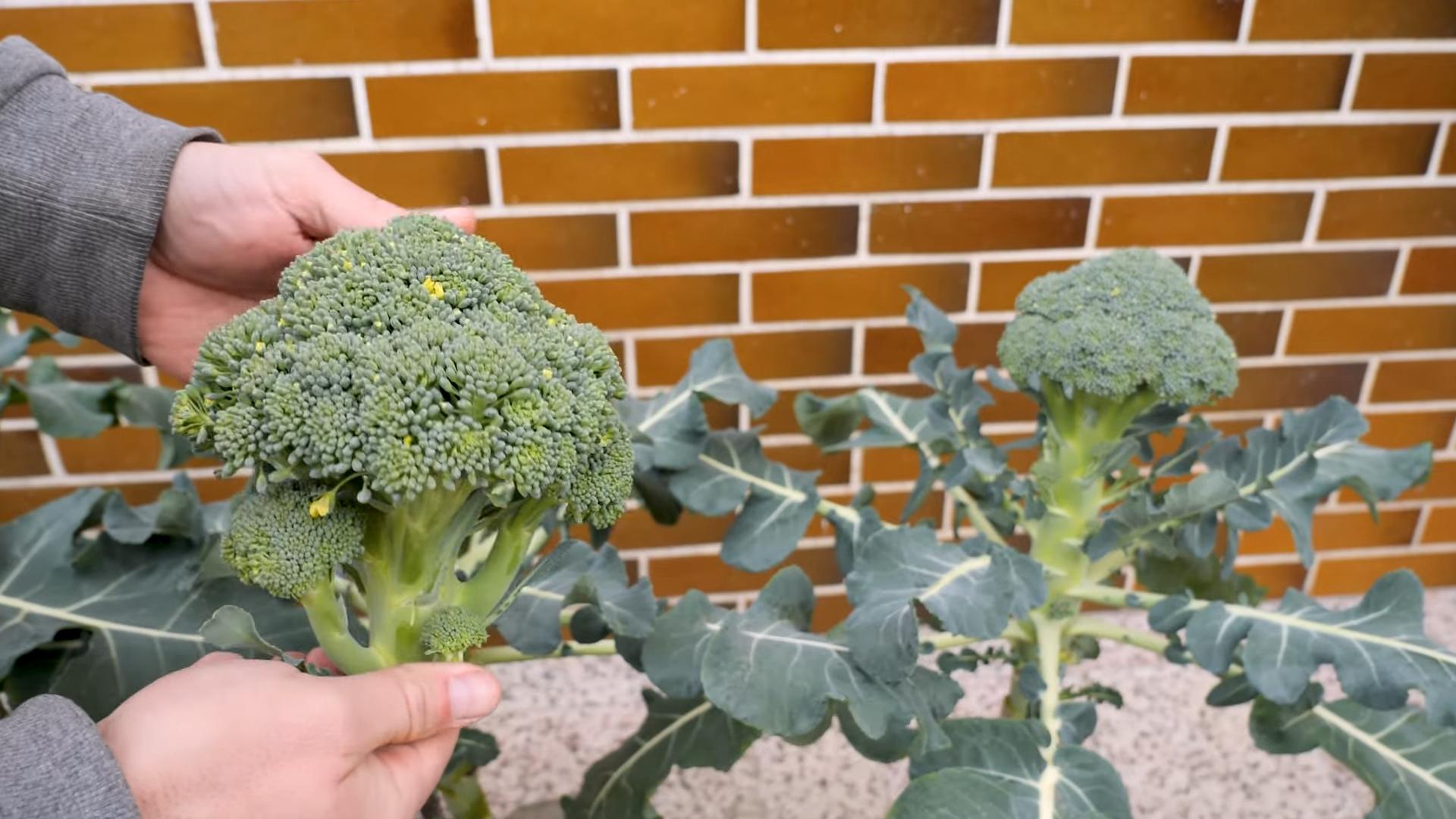
Growing Broccoli from Seed: A Comprehensive DIY Guide
Hey there, fellow gardening enthusiasts! I’m so excited to share my tried-and-true method for growing broccoli from seed. It’s surprisingly easy, incredibly rewarding, and you’ll be enjoying fresh, homegrown broccoli in no time. Trust me, the taste difference between store-bought and homegrown is night and day!
Why Grow Broccoli from Seed?
Before we dive in, let’s talk about why starting from seed is the way to go.
* Cost-Effective: Buying broccoli seedlings can get expensive, especially if you want a good-sized harvest. Seeds are much cheaper!
* Variety: You’ll have access to a wider range of broccoli varieties than you’ll typically find at your local garden center. Think purple sprouting broccoli, Romanesco, and more!
* Control: You have complete control over the growing process, from the soil to the fertilizer.
* Satisfaction: There’s nothing quite like the feeling of nurturing a plant from a tiny seed to a delicious, edible vegetable.
Materials You’ll Need
Okay, let’s gather our supplies. Here’s what you’ll need to grow broccoli from seed:
* Broccoli Seeds: Choose a variety that suits your climate and taste preferences. Look for disease-resistant varieties for best results.
* Seed Starting Trays or Pots: I prefer seed starting trays with individual cells, but small pots work just as well.
* Seed Starting Mix: This is a light, sterile soil mix specifically designed for starting seeds. Don’t use garden soil!
* Watering Can or Spray Bottle: For gentle watering.
* Grow Lights (Optional but Recommended): Especially if you’re starting seeds indoors early in the season.
* Heat Mat (Optional): To speed up germination.
* Labels and a Permanent Marker: To keep track of your varieties.
* Small Trowel or Spoon: For transplanting seedlings.
* Garden Soil: For transplanting into your garden or larger containers.
* Compost or Other Organic Matter: To enrich your garden soil.
* Fertilizer: A balanced fertilizer for feeding your broccoli plants.
* Row Covers (Optional): To protect your plants from pests and extreme weather.
When to Start Broccoli Seeds
Timing is crucial for successful broccoli growing. Broccoli is a cool-season crop, meaning it thrives in cooler temperatures.
* For a Spring Crop: Start seeds indoors 6-8 weeks before the last expected frost.
* For a Fall Crop: Start seeds indoors 10-12 weeks before the first expected frost.
Check your local frost dates to determine the best time to start your seeds.
Starting Broccoli Seeds Indoors: Step-by-Step
This is where the magic happens! Follow these steps to get your broccoli seeds off to a great start.
1. Prepare Your Seed Starting Trays: Fill your seed starting trays or pots with seed starting mix. Gently tap the trays to settle the mix.
2. Sow the Seeds: Make a small indentation (about 1/4 inch deep) in the center of each cell or pot. Place 2-3 broccoli seeds in each indentation. This increases the chances of at least one seed germinating.
3. Cover the Seeds: Gently cover the seeds with seed starting mix.
4. Water Thoroughly: Use a watering can or spray bottle to thoroughly moisten the seed starting mix. Be careful not to wash the seeds away.
5. Provide Warmth: Place the seed starting trays on a heat mat (if using) and cover them with a humidity dome or plastic wrap to create a warm, humid environment. This will help the seeds germinate faster.
6. Provide Light: Place the seed starting trays under grow lights or in a sunny window. If using grow lights, keep them about 2-4 inches above the trays.
7. Monitor Moisture: Keep the seed starting mix consistently moist, but not soggy. Water as needed.
8. Germination: Broccoli seeds typically germinate in 5-10 days. Once the seedlings emerge, remove the humidity dome or plastic wrap.
9. Thin the Seedlings: Once the seedlings have their first true leaves (the second set of leaves), thin them to one seedling per cell or pot. Choose the strongest, healthiest-looking seedling and snip off the others at the soil line. Don’t pull them out, as this can disturb the roots of the remaining seedling.
10. Harden Off the Seedlings: Before transplanting your broccoli seedlings outdoors, you need to “harden them off.” This process gradually acclimates them to outdoor conditions. Start by placing the seedlings outdoors in a sheltered location for a few hours each day, gradually increasing the amount of time they spend outdoors over the course of a week or two. Protect them from direct sunlight and strong winds.
Transplanting Broccoli Seedlings Outdoors
Once your broccoli seedlings are hardened off and the weather is right, it’s time to transplant them into your garden.
1. Prepare Your Garden Bed: Choose a sunny location with well-drained soil. Broccoli needs at least 6 hours of sunlight per day. Amend the soil with compost or other organic matter to improve its fertility and drainage.
2. Space the Seedlings: Space the broccoli seedlings 18-24 inches apart in rows that are 24-36 inches apart. This will give them enough room to grow and mature.
3. Dig Holes: Dig holes that are slightly larger than the root balls of the seedlings.
4. Transplant the Seedlings: Gently remove the seedlings from their trays or pots and place them in the holes. Make sure the top of the root ball is level with the surrounding soil.
5. Fill the Holes: Fill the holes with soil and gently firm the soil around the seedlings.
6. Water Thoroughly: Water the seedlings thoroughly after transplanting.
7. Mulch: Apply a layer of mulch around the broccoli plants to help retain moisture, suppress weeds, and regulate soil temperature.
8. Protect from Pests: If you’re concerned about pests, such as cabbage worms or aphids, cover your broccoli plants with row covers.
Caring for Your Broccoli Plants
Now that your broccoli plants are in the ground, it’s important to provide them with the care they need to thrive.
1. Watering: Water your broccoli plants regularly, especially during dry periods. Aim to keep the soil consistently moist, but not soggy.
2. Fertilizing: Fertilize your broccoli plants every 2-3 weeks with a balanced fertilizer. Follow the instructions on the fertilizer package.
3. Weeding: Keep your garden bed free of weeds, as weeds can compete with your broccoli plants for nutrients and water.
4. Pest Control: Monitor your broccoli plants regularly for pests. If you find any pests, take action to control them. You can use organic pest control methods, such as insecticidal soap or neem oil.
5. Support: If your broccoli plants get very tall or top-heavy, you may need to provide them with support. You can use stakes or cages to support the plants.
Harvesting Your Broccoli
The moment you’ve been waiting for! Harvesting your homegrown broccoli.
1. Timing: Harvest your broccoli when the flower buds are tight and compact. If the buds start to open and turn yellow, it’s time to harvest.
2. Cutting: Use a sharp knife to cut the broccoli head from the plant. Cut the stem at an angle, about 6 inches below the head.
3. Side Shoots: After you harvest the main head, your broccoli plant will continue to produce side shoots. You can harvest these side shoots as they mature.
4. Enjoy: Enjoy your fresh, homegrown broccoli! You can eat it raw, steamed, roasted, or in your favorite recipes.
Troubleshooting
Even with the best care, you may encounter some problems when growing broccoli. Here are some common issues and how to address them:
* Cabbage Worms: These green caterpillars can devour your broccoli leaves. Handpick them off the plants or use Bacillus thuringiensis (Bt), a natural insecticide.
* Aphids: These small, sap-sucking insects can weaken your broccoli plants. Spray them with insecticidal soap or neem oil.
* Clubroot: This fungal disease causes swollen, distorted roots. Prevent clubroot by improving soil drainage and rotating your crops.
* Downy Mildew: This fungal disease causes yellow spots on the leaves. Improve air circulation and avoid overhead watering.
Choosing the Right Broccoli Variety
Selecting the right broccoli variety is key to a successful harvest. Here are a few popular and reliable options:
* ‘Waltham 29’: A classic, heat-tolerant variety that produces
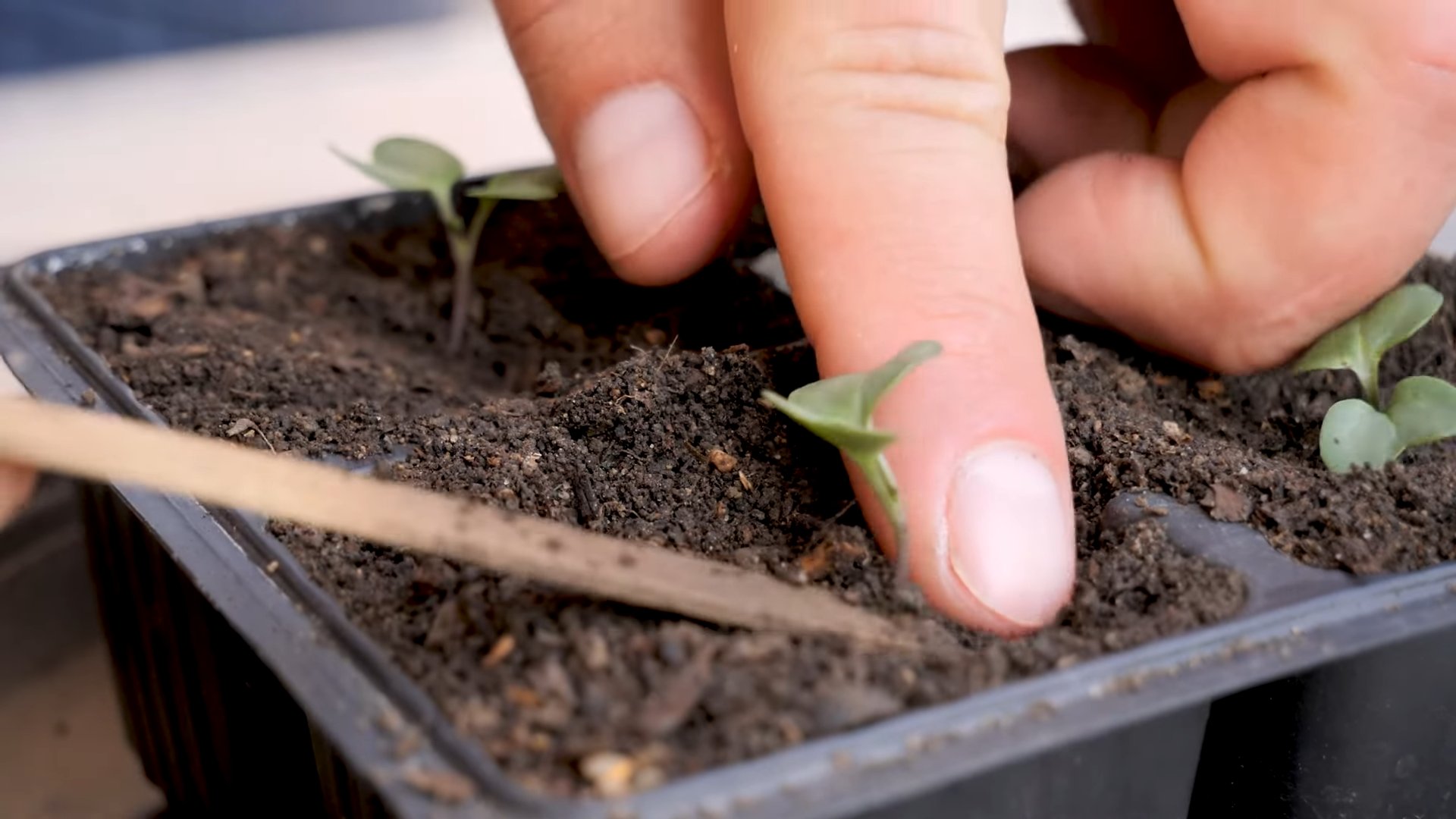
Conclusion
So, there you have it! Growing broccoli from seed isn’t just a gardening project; it’s a gateway to fresher, more flavorful, and ultimately, more rewarding meals. We’ve walked through the entire process, from selecting the right seeds and preparing your soil to nurturing those tiny seedlings and transplanting them into your garden. The satisfaction of harvesting your own heads of broccoli, knowing exactly where they came from and how they were grown, is truly unparalleled.
Why is this DIY trick a must-try? Because it empowers you to take control of your food source. You’re not reliant on grocery store produce that may have traveled hundreds or even thousands of miles. You’re cultivating a sustainable, healthy, and delicious crop right in your own backyard. Plus, growing broccoli from seed allows you to choose from a wider variety of broccoli types than you’ll typically find in stores. Experiment with different cultivars like ‘DiCicco’ for early harvests, ‘Waltham 29’ for cold hardiness, or even purple sprouting broccoli for a unique and colorful addition to your plate.
Consider these variations to personalize your broccoli-growing journey:
* Succession Planting: Plant seeds every few weeks to ensure a continuous harvest throughout the growing season. This is especially useful if you have a large family or enjoy eating broccoli regularly.
* Container Gardening: If you’re short on space, broccoli can be successfully grown in large containers. Choose a pot that’s at least 18 inches in diameter and filled with high-quality potting mix.
* Companion Planting: Plant broccoli alongside beneficial companions like chamomile, dill, or rosemary to deter pests and attract pollinators. Marigolds are also excellent for repelling nematodes.
* Organic Fertilizers: Enhance your soil with organic fertilizers like compost tea, fish emulsion, or bone meal to provide your broccoli plants with the nutrients they need to thrive.
Don’t be intimidated by the prospect of growing your own broccoli. It’s a relatively straightforward process, and the rewards are well worth the effort. Remember to pay attention to your plants’ needs, provide them with adequate sunlight and water, and protect them from pests and diseases. With a little patience and care, you’ll be harvesting your own delicious broccoli in no time.
We wholeheartedly encourage you to give this DIY trick a try. Start small, learn as you go, and don’t be afraid to experiment. The journey of growing your own food is a deeply enriching experience, and we’re confident that you’ll find it both enjoyable and rewarding.
And most importantly, we want to hear about your experiences! Share your successes, your challenges, and your tips for growing broccoli from seed in the comments below. Let’s create a community of broccoli-growing enthusiasts and learn from each other. Your insights could be invaluable to other gardeners who are just starting out. So, grab your seeds, get your hands dirty, and let’s grow some broccoli together!
Frequently Asked Questions (FAQs)
What is the best time to start broccoli seeds indoors?
The ideal time to start broccoli seeds indoors is typically 6-8 weeks before the last expected frost in your area. This allows the seedlings to develop a strong root system before being transplanted outdoors. Check your local frost dates to determine the appropriate timing for your region. You can also direct sow seeds outdoors a few weeks before the last frost, but indoor starting gives you a head start and better control over the growing environment.
How much sunlight do broccoli plants need?
Broccoli plants require at least 6 hours of direct sunlight per day to thrive. Choose a location in your garden that receives ample sunlight throughout the day. If you’re growing broccoli in containers, make sure to place them in a sunny spot. Insufficient sunlight can result in leggy plants with small, underdeveloped heads.
What kind of soil is best for growing broccoli?
Broccoli prefers well-drained, fertile soil that is rich in organic matter. Amend your soil with compost or well-rotted manure before planting to improve its drainage and nutrient content. The ideal soil pH for broccoli is between 6.0 and 7.0. You can test your soil pH using a soil testing kit and adjust it accordingly with lime or sulfur.
How often should I water my broccoli plants?
Broccoli plants need consistent moisture to thrive. Water them deeply whenever the top inch of soil feels dry to the touch. Avoid overwatering, as this can lead to root rot. Mulching around your plants with straw or wood chips can help to retain moisture and suppress weeds. During hot, dry weather, you may need to water your broccoli plants more frequently.
What are some common pests and diseases that affect broccoli?
Broccoli plants are susceptible to a variety of pests and diseases, including cabbage worms, aphids, flea beetles, clubroot, and downy mildew. Regularly inspect your plants for signs of infestation or disease. Use organic pest control methods, such as insecticidal soap or neem oil, to control pests. Practice crop rotation and choose disease-resistant varieties to prevent diseases.
How do I know when my broccoli is ready to harvest?
Broccoli is ready to harvest when the heads are firm, tight, and have reached the desired size. The florets should be tightly closed and dark green. If the florets start to open and turn yellow, it’s a sign that the broccoli is overripe. Cut the main head of broccoli with a sharp knife, leaving a few inches of stem. Side shoots will often develop after the main head is harvested, providing you with additional broccoli over a longer period.
Can I grow broccoli in containers?
Yes, broccoli can be successfully grown in containers. Choose a large container that is at least 18 inches in diameter and filled with high-quality potting mix. Make sure the container has drainage holes to prevent waterlogging. Water your container-grown broccoli plants regularly and fertilize them with a balanced fertilizer every few weeks.
What are some good companion plants for broccoli?
Good companion plants for broccoli include chamomile, dill, rosemary, marigolds, onions, garlic, and nasturtiums. These plants can help to deter pests, attract pollinators, and improve the overall health of your broccoli plants. Avoid planting broccoli near strawberries, tomatoes, or peppers, as these plants can compete for resources or attract pests that also affect broccoli.
How can I prevent my broccoli from bolting (going to seed)?
Bolting is when a plant prematurely flowers and goes to seed, often due to stress from heat or lack of water. To prevent broccoli from bolting, choose bolt-resistant varieties, provide consistent moisture, and protect your plants from extreme heat. Mulching around your plants can help to keep the soil cool and moist. Harvest your broccoli promptly when it is ready to prevent it from bolting.
Is growing broccoli from seed worth the effort?
Absolutely! While it requires some time and effort, growing broccoli from seed offers numerous benefits. You have greater control over the varieties you grow, you can save money compared to buying broccoli from the store, and you get the satisfaction of harvesting your own fresh, healthy produce. Plus, homegrown broccoli often tastes better than store-bought broccoli, as it hasn’t traveled long distances and lost its freshness. The experience of nurturing a plant from seed to harvest is incredibly rewarding and connects you to the natural world in a meaningful way.

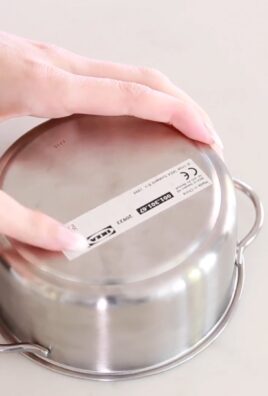
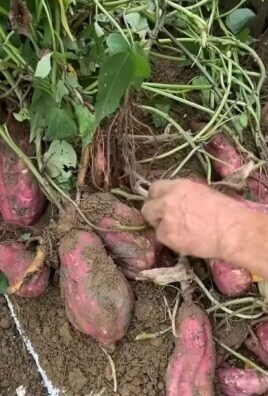
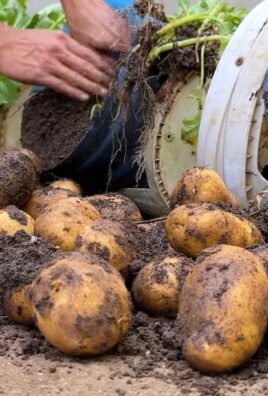
Leave a Comment